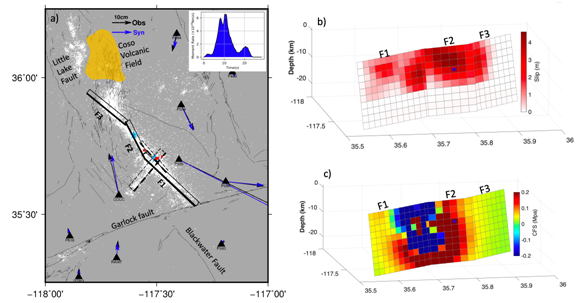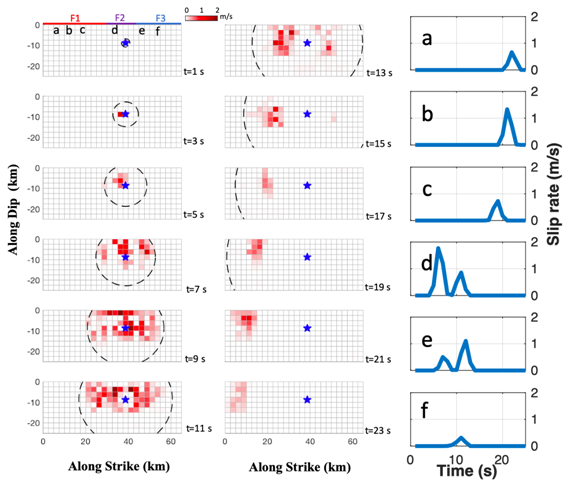The earthquakes that shattered nearly twenty years of significant seismic silence in Southern California on 4 July 2019 were part of a set of shocks that led to a fundamentally improved understanding of the fault rupture process.
Earlier today, Department of Earth and Space Sciences (ESS) Assistant Professor Kejie Chen from Southern University of Science and Technology (SUSTech) was published with his collaborators in Nature Communications (IF=12.19) for their paper on the earthquake sequence, titled “Cascading and pulse-like ruptures during the 2019 Ridgecrest earthquakes in the Eastern California Shear Zone.”
The current research into earthquakes suggests that there are two types of earthquake ruptures: cascading and pulse-like fractures. A cascade-like rupture can be thought of as happening simultaneously and rippling outwards at once, much like a crack in the ground. Pulse-like ruptures, on the other hand, can be compared to waving a string up and down, in that they occur at distinct time intervals. Understanding the initial stress is believed to determine the type of fracture due to the different stress patterns. However, this had never been seen in reality.
The 2019 Ridgecrest earthquakes occurred on July 4 and 5, north and northeast of the town of Ridgecrest in Southern California. The first earthquake, now known as a foreshock, was a 6.4 magnitude earthquake (M6.4) on the morning of July 4 and was followed by M5.4 and M7.1 earthquake on July 5. Associate Professor Kejie Chen and his collaborators from the Division of Geological and Planetary Sciences & Jet Propulsion Laboratory at Caltech, as well as Beihang University, conducted field surveys and used satellite images along with the dense observation of Southern California’s high-frequency of GPS sensors to accurately retrieve the fracture distribution and kinematic fracture process of the two earthquakes.

Their research found that the earthquake sequence is part of the Eastern California Shear Zone (ECSZ) that has been studied since 1872 due to the increased strain that has been observed in the ECSZ. The sequence of earthquakes occurred on at least five different faults, with the M6.4 earthquake being caused by a slip fault that ruptured to the surface. The M7.1 earthquake on July 5 occurred on three northwestern faults (F1, F2, F3) at a shallow depth.

Their continuing analysis found that the M6.4 earthquake had increased the shear stress, which ultimately triggered the M7.1 earthquake, with its epicenter at the F2 fault. There was also less stress at the F1 failure. The initial pressure at F2 should have been the largest out F1, F2, and F3. The high stress at F2 and the lower pressure at F1 suggest the generation of the two different types of earthquake ruptures and are highly consistent with the seismic rupture process.
Their research provides a vital reference for future research for earthquake risk assessment in Southern California. The M7.1 earthquake stopped near the Garlock Fault, which is one of the major fault lines in Southern California and has been silent for at least the last five hundred years. The Ridgecrest earthquakes have increased the stress on the Garlock Fault, which means it could be more susceptible to rupture in the future. It has been the source of considerable interest by many government bodies, companies, and citizens.
Associate Professor Kejie Chen is the first author and the correspondent author of the paper. His international collaborators include Professor Jean-Philippe Avouac and Research Assistant Saif Aati from the Division of Geological and Planetary Sciences at Caltech, and Professor Chris Milliner at the Jet Propulsion Laboratory at Caltech. Domestic partners were Professor Fu Zheng and Chuang Shi at the School of Electronic and Information Engineering at Beihang University.
Paper link: https://www.nature.com/articles/s41467-019-13750-w
Proofread ByXia Yingying
Photo ByDepartment of Earth and Space Sciences